A UNESCO Intangible Cultural Heritage
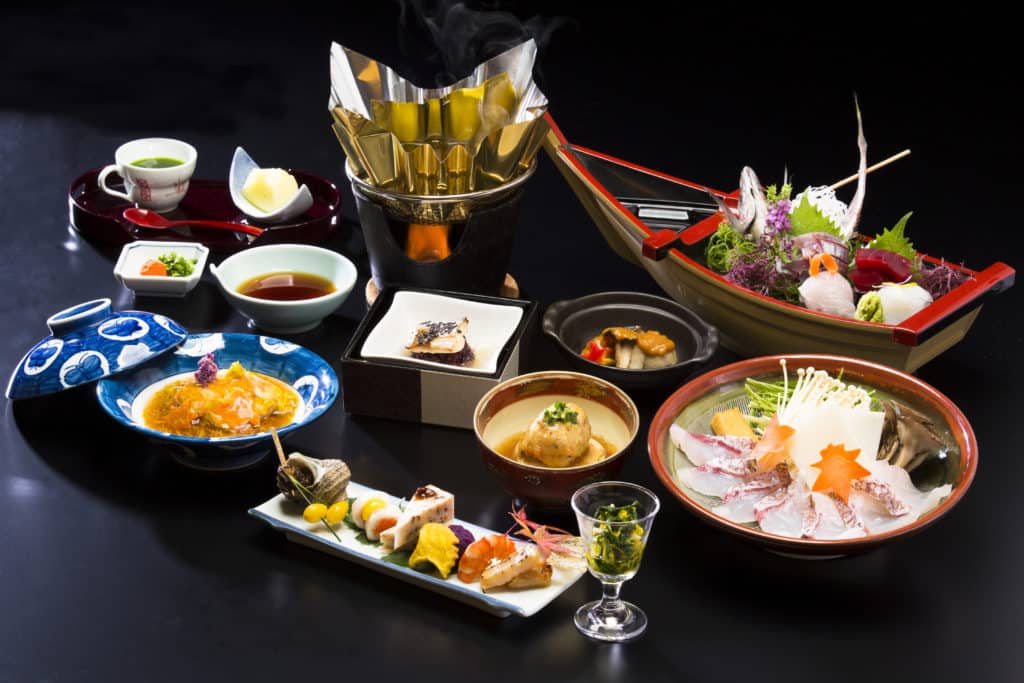
“We eat with our eyes”
Washoku, or Japanese cuisine, is famous the world over for its impeccable presentation and meticulous attention to detail. Japanese meals are beautiful, tasty, and healthful.
There is a Japanese expression, me de taberu, 目で食べる, “We eat with our eyes.” As you can imagine, this refers to the time we spend admiring the beauty of our meal before partaking. It is a crucial aspect of Washoku.
Another saying instructs us that each meal should include foods of five different colors, and every day one should eat 30 different types of food. One kaiseki, or formal course meal, has at least that many.
This positive outlook on food, trying to include many different types each day, is refreshingly different from guidelines we often hear that advise us to cut foods out of our diets.
This mentality surely plays a part in the vast variety, colorful bounty, and artistic presentation that make up a single Japanese meal.
Geography affects diet
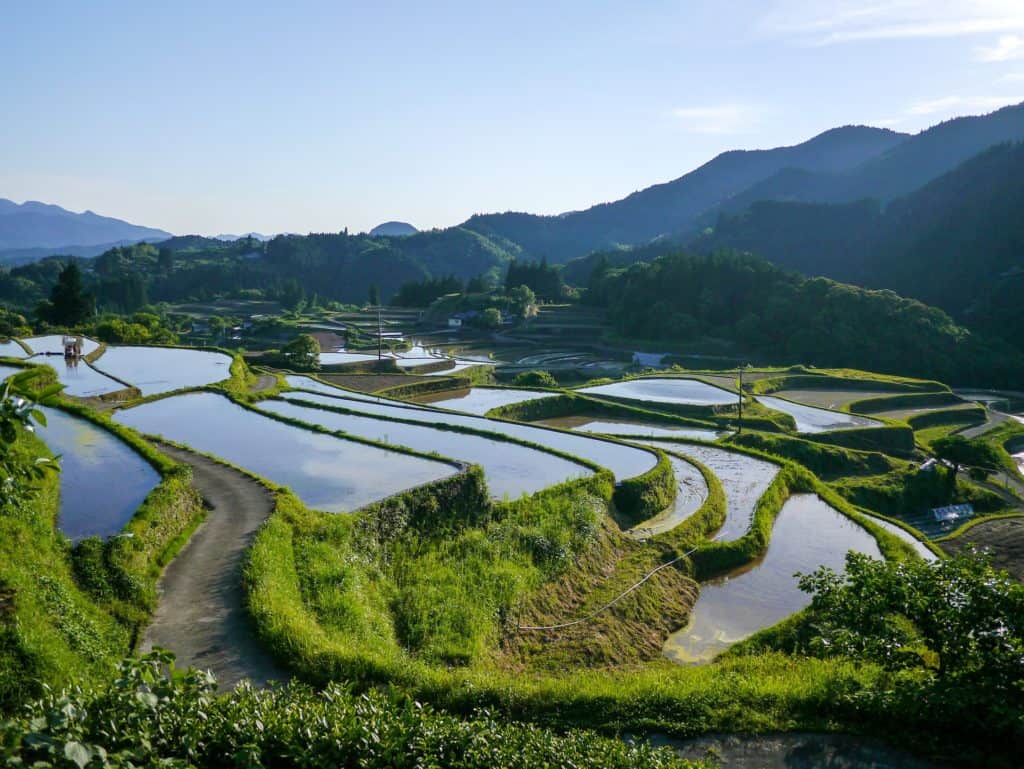
Over 70% of Japan is covered by mountains, so anything like the vast farms and ranches of Europe and America would be unthinkable. Rice farming has been the nation’s livelihood since the wet field farming method was brought to Japan from Korea in the Yayoi period. (Depending on the area, the Yayoi period is considered to be from 900-400 BC until 300 AD.)
From that time, rice, or gohan, became the main component of the Japanese diet. Much like the word “bread” in English was used as a general term for food — “Give us this day our daily bread…” — even today gohan is used to mean both cooked rice and a meal.
Japan consists of over 14,000 islands, stretching from subarctic Hokkaido to subtropical Okinawa. Bountiful, varied, and seasonal supplies of fish, other sea creatures, and many types of seaweed play a supporting role in the traditional Japanese diet.
Due to the variety of ingredients available throughout the archipelago, each area has developed regional fare that varies according to what foods are in season. One stand-out dish is ramen, an import from China, of which each area boasts its unique version.
Each region also has its own local sake, fermented from rice and koji mold. In the southwest, shochu is distilled, most famously, from sweet potatoes, and in Okinawa, the 60–86 proof awamori is distilled from indica rice, imported from Thailand.
The concept of preparing meals from seasonal foods is deeply ingrained in the Japanese. It has long been believed that whatever foods are in season are what our bodies need to maintain health at that time. The huge Western-style supermarkets with produce shipped in from all over the world have not yet caught on here, at least not that I’ve seen.
Buddhism’s influence on Washoku
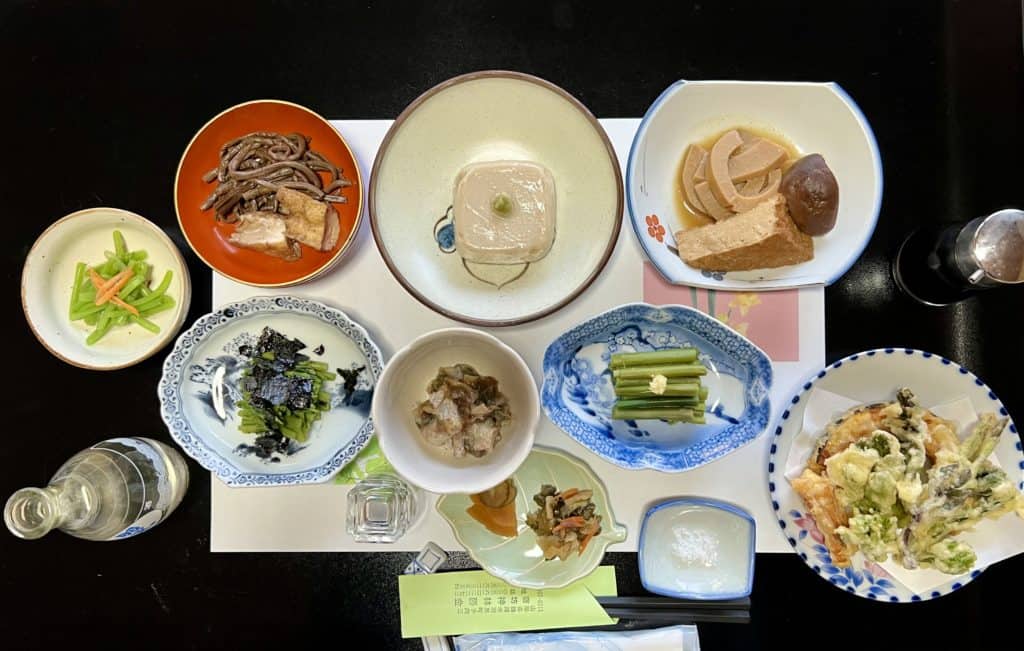
Buddhism was brought to Japan in the 6th century and initially spread among the aristocratic leaders of the Nara government. Because of the Buddhist belief in reincarnation, in 675 AD, Emperor Tenmu proclaimed a ban on eating mammals. No one wanted to inadvertently eat one of their ancestors!
Over 500 years later, Zen Buddhism began to spread among the samurai during the Kamakura era (1185–1333). Buddhist temples developed shojin-ryori, vegetarian cooking that uses various soy products such as tofu, natto, and yuba (the skin from gently boiled soymilk), wild and cultivated vegetables, and konnyaku (a rubber-like food made from the corm of the konjac plant).
This vegetarian cooking style spread from Zen temples to the general public and became influential in the development of Washoku.
It was during this time that miso, developed as a luxury item during the Heian era (794-1185), became more common and was first used in soup.
Ichiju sansai — one soup, three sides
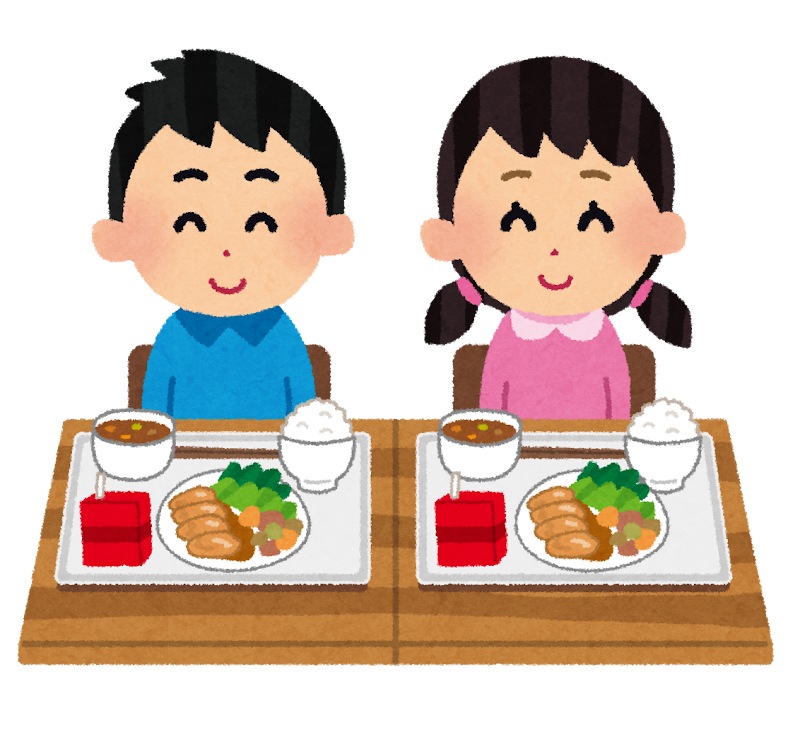
During the Muromachi era (1336-1573), farmers began making their own miso, used in soup, to flavor dishes, and as a preservative.
A new type of meal developed — rice, the basis of all meals, with one soup, three side dishes, and, sometimes, a small dish of pickles. This type of meal became the standard for traditional Washoku.
Today, children are served ichiju sansai for their school lunches, and many restaurants offer a “set menu” of ichiju sansai for lunch at affordable prices.
At the end of the Muromachi era, Portuguese missionaries brought fried food to Japan which developed into tempura. They also brought castella cakes and bread which both kept their Portuguese names, kasutera and pan.
Edo era specialization
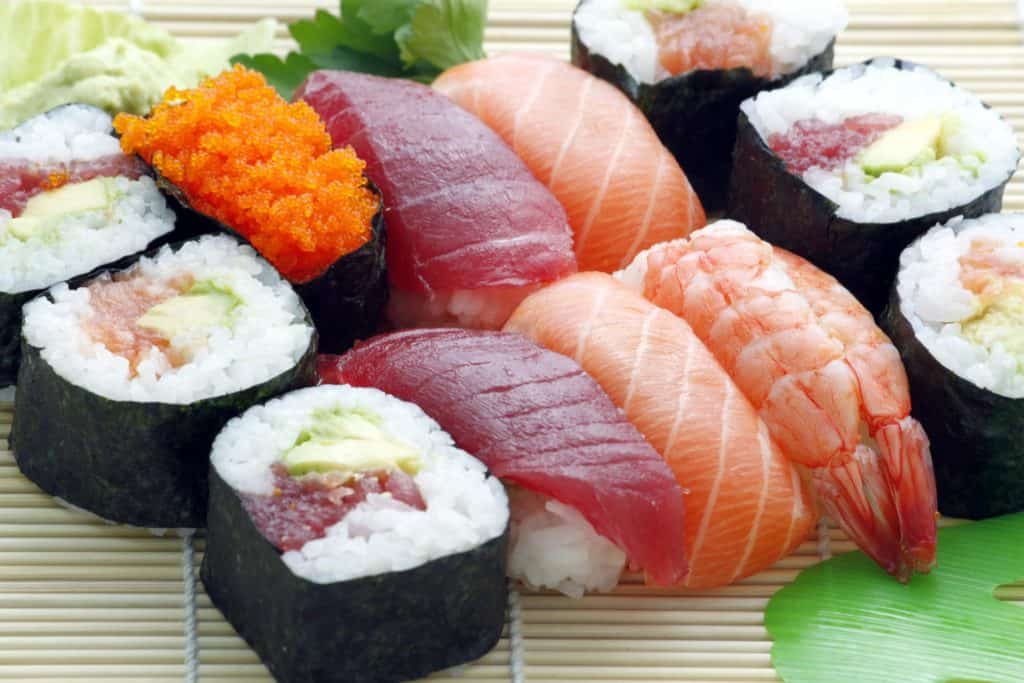
During the 250 years of stability under the Tokugawa shogunate (1603-1867), there were no wars and no foreign incursions. Merchants and peasants grew in prosperity and culture flourished.
Sushi developed as street food in Edo (Tokyo), and specialized restaurants sprung up all across the booming city.
In spite of the ban on eating meat, there were Edo markets that sold the meat of boar, deer, bear, dog, fox, wolf, weasel, and otter. These foods were euphemistically referred to as medicine using plant names. Deer was momiji (maple tree) or kōyō, wild boar was peony, bear was cherry blossom, and chicken was kashiwa meaning oak. To this day, chicken is still called kashiwa in certain areas of the country.
For years, the wealthy Ii (pronounced ee) family of Hikone, in Shiga Prefecture, sent beef preserved in miso to the shogun as a winter gift.
Today, there are an estimated 60,000 restaurants in Tokyo, most of which are small and sell just one type of dish — fried pork cutlets, beef bowl, curry, etc. You generally won’t be able to get soba noodle dishes at a ramen shop, nor ramen at a soba/udon shop. They’re both noodle soups, but they are very different.
In 2023, of those 60,000 Tokyo restaurants, 183 were Michelin-starred, far more than any other city in the world.
The Meiji era brings big changes
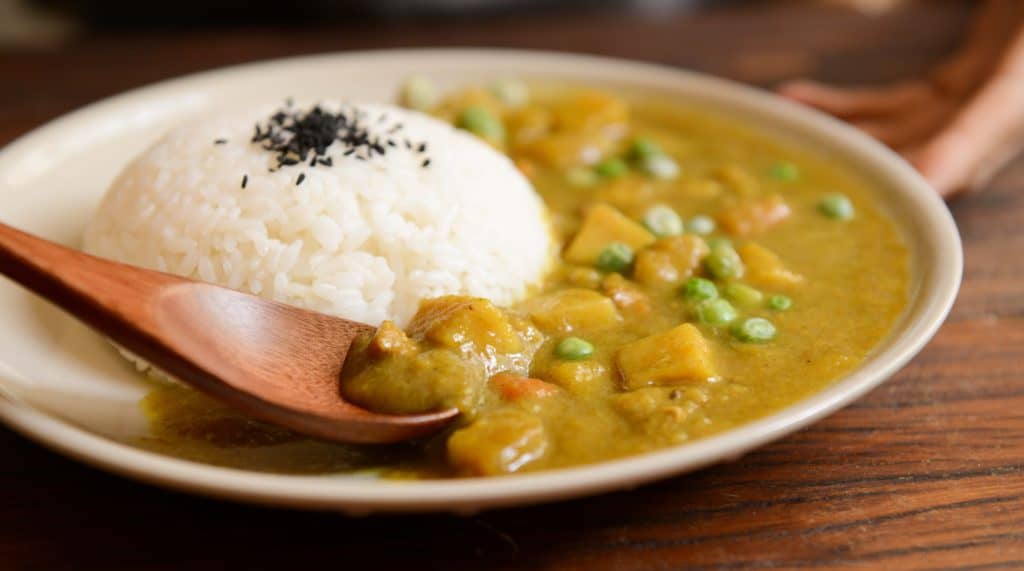
In the 1850s, Japan’s doors were opened and Western influence flooded in. Part of that influence was the practice of eating meat. Government leaders felt that including meat in the Japanese diet would help the population to be stronger and more robust. The young Emperor Meiji led the way by publicly eating meat to celebrate the New Year in 1872.
Beef and pork, though, with their strong taste and smell were not eagerly received by the Japanese, so dishes were developed to mask the smell. One of these was a “medicinal dish” that developed into sukiyaki, a one-pot dish where thin slices of beef or pork are simmered with a mix of dashi broth, soy sauce, sake, and sugar. The slices of meat are dipped in a beaten raw egg before eating.
Another popular meat dish, curry, was imported during the early years of the Meiji government. The American Professor Clark, famed for his role in leading the Hokkaido Agricultural University, is credited with suggesting that potatoes — a new product of Hokkaido — be added to curry for extra nourishment during a rice shortage, and the custom continues to this day.
After Japan’s alliance with Britain in 1902, curry eating became widespread. Japanese sailors adopted the British sailors’ practice of eating curry while at sea, then brought the savory dish back home.
Umami
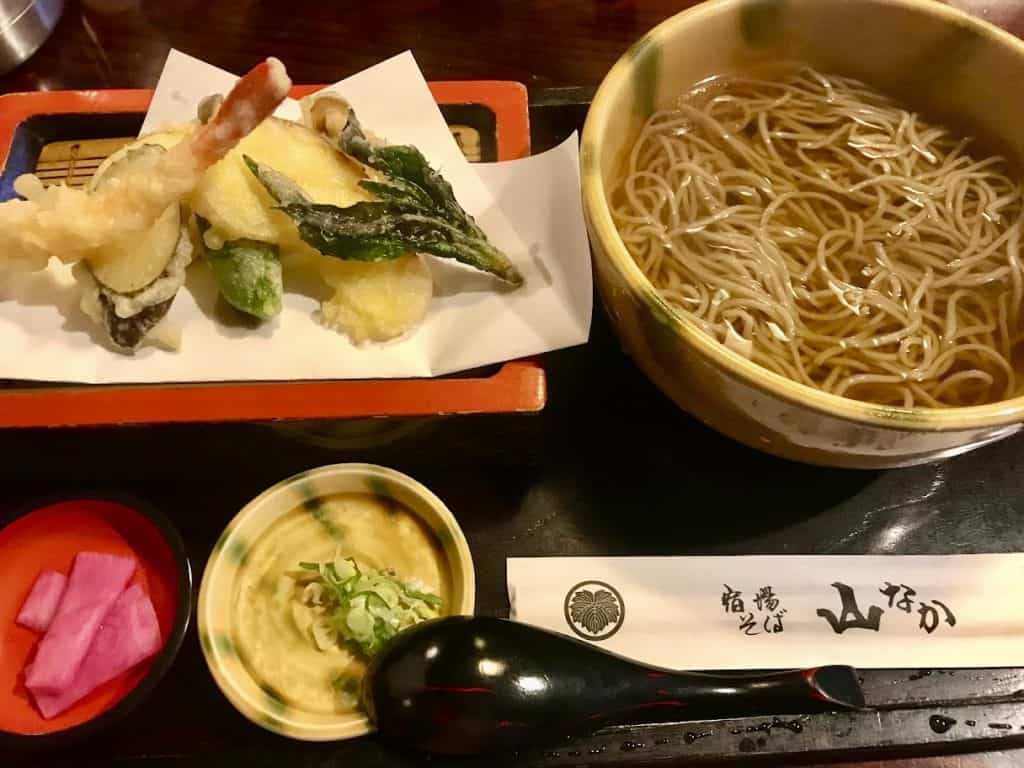
We’ve all heard the basic flavors of sweet, salty, sour, bitter, and umami. But where did umami come from?
In 1907, the Japanese scientist Ikeda Kikunae was enjoying a bowl of tofu boiled in kombu kelp broth. While savoring this savory dish, he became convinced that there must be a fifth basic flavor, and he set out to prove it. The next year, he isolated glutamate crystals, a common amino acid, and gave it the name Aji no Moto, 味の素, or the essence of flavor.
Umami is an integral part of Washoku. Dashi, the umami-rich stock made either from kombu kelp or katsuobushi, dried bonito flakes, is the basis of innumerable delicious Japanese dishes.
UNESCO describes its choice of Washoku as an Intangible Cultural Heritage of Humanity by writing that “it is associated with an essential spirit of respect for nature that is closely related to the sustainable use of natural resources… The practice favors the consumption of various natural, locally sourced ingredients such as rice, fish, vegetables, and edible wild plants.”
Is it any wonder that Washoku is one of the Five Things I Love About Japan?
If you have questions about Japan or suggestions for articles, please add them in the comments. For more photos and information on Japan, follow me on instagram at: https://www.instagram.com/more_than_tokyo/




